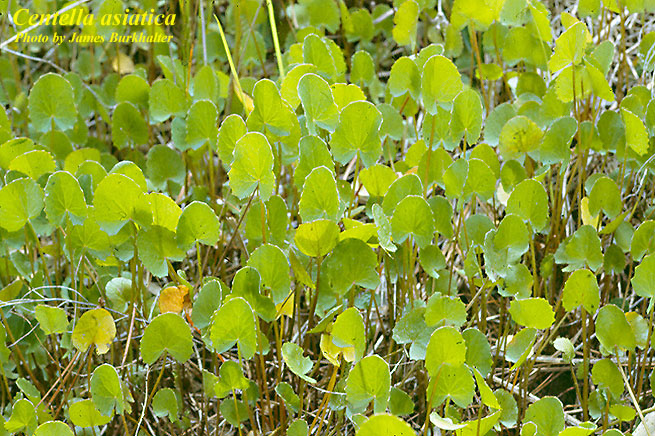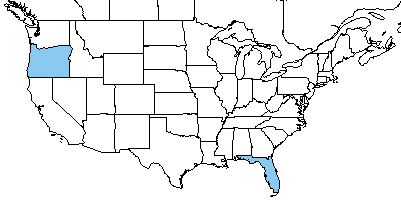Difference between revisions of "Centella asiatica"
(→Distribution) |
|||
| Line 31: | Line 31: | ||
==Ecology== | ==Ecology== | ||
===Habitat=== <!--Natural communities, human disturbed habitats, topography, hydrology, soils, light, fire regime requirements for removal of competition, etc.--> | ===Habitat=== <!--Natural communities, human disturbed habitats, topography, hydrology, soils, light, fire regime requirements for removal of competition, etc.--> | ||
| + | ''C. asiatica'' is found in savannas, pondshores, ditches, and a wide variety of other moist to wet habitats. <ref name= "Weakley 2015"> Weakley, A. S. (2015). Flora of the Southern and Mid-Atlantic States. Chapel Hill, NC, University of North Carolina Herbarium. </ref> | ||
<!--===Phenology===--> <!--Timing off flowering, fruiting, seed dispersal, and environmental triggers. Cite PanFlora website if appropriate: http://www.gilnelson.com/PanFlora/ --> | <!--===Phenology===--> <!--Timing off flowering, fruiting, seed dispersal, and environmental triggers. Cite PanFlora website if appropriate: http://www.gilnelson.com/PanFlora/ --> | ||
<!--===Seed dispersal===--> | <!--===Seed dispersal===--> | ||
Revision as of 12:55, 18 May 2018
| Centella asiatica | |
|---|---|

| |
| Photo by the Atlas of Florida Plants Database | |
| Scientific classification | |
| Kingdom: | Plantae |
| Division: | Magnoliophyta - Flowering plants |
| Class: | Magnoliopsida - Dicots |
| Order: | Apiales |
| Family: | Apiaceae |
| Genus: | Centella |
| Species: | C. asiatica |
| Binomial name | |
| Centella asiatica L. Urb. | |

| |
| Natural range of Centella asiatica from USDA NRCS Plants Database. | |
Contents
Taxonomic Notes
Synonyms: C. erecta (Linnaeus f.) Fernald; C. repanda (Persoon) Small
Varieties: none
Description
C. asiatica is a perennial forb/herb/subshrub of the Apiaceae family native to the Pacific Basin, excluding Hawaii. [1]
Distribution
While native to the Pacific Basin, C. asiatica has been introduced to Hawaii, Oregon and Florida. [1]
Ecology
Habitat
C. asiatica is found in savannas, pondshores, ditches, and a wide variety of other moist to wet habitats. [2]
Conservation and Management
Cultivation and restoration
Photo Gallery
References and notes
- ↑ 1.0 1.1 USDA Plant Database https://plants.usda.gov/core/profile?symbol=CEAS
- ↑ Weakley, A. S. (2015). Flora of the Southern and Mid-Atlantic States. Chapel Hill, NC, University of North Carolina Herbarium.